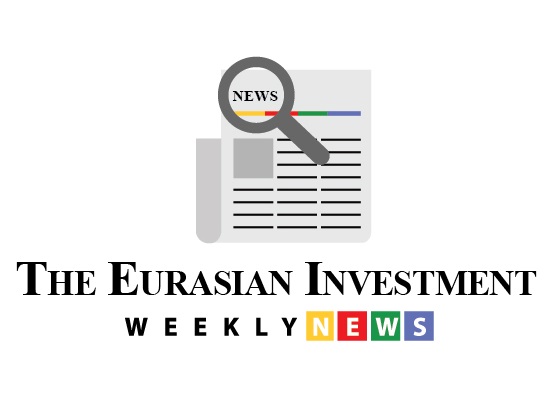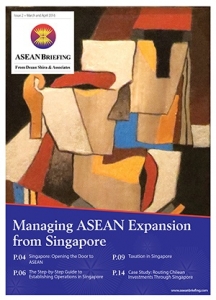China
 China’s New NGO Law and its Impact on FDI into the Higher Education Industry
China’s New NGO Law and its Impact on FDI into the Higher Education Industry
China’s recently released law to regulate the activities of foreign non-governmental organizations (NGOs) has raised fresh doubts regarding foreign investment into China’s higher education industry. Set to come into effect in January next year, the law contains provisions that will further regulate education institutions with operations in the country and affect the entry strategy of new players looking to enter the market.
Powered by China’s economic development and a rapid increase in university student enrollment, there has been a sharp rise in interest from foreign education providers to invest in China since the turn of the century. The industry is potentially hugely profitable, with China’s increasingly affluent population willing to pay more in tuition fees to enroll at foreign education institutions, which are generally seen as more prestigious. However, Sino-foreign education institutions have long been subject to special scrutiny in China, resulting in 70 percent of Sino-foreign education applications being rejected in 2011. The new law is set to further complicate the industry for foreign education providers, raising questions of how foreign investment can effectively be channeled.
Turning up the Heat: Understanding China’s Regional High Temperature Allowance
As summer approaches, a notice detailing temperature standards in Shanghai workplaces and the proper payment of the high temperature allowance has been released. Effective from June 1, 2016, the notice stipulates that between the months of June and September, Shanghai companies with outdoor labor must take effective measures to maintain a workplace temperature of below 33℃. Employers who fail to keep suitable temperatures are legally obliged to pay a monthly high temperature allowance of RMB 200 to employees, which must be included in the sum of the total salary. In addition, while paying the allowance, companies are still required to provide employees with cool beverages.
28 regions of China have implemented measures for the summer high temperature allowance, with only the more temperate provinces of Heilongjiang, Tibet and Qinghai not providing the allowance. Each region’s stipulations are different, with some calculating allowances per day and some per month. However, many laborers complain that they do not receive the allowance, despite the hot weather, which last summer reached temperatures as hot as 40C in some areas. Many companies are too concerned about costs, making them reluctant to pay out allowances, and in some cases exploit loopholes in order to avoid paying.
India
Employing Women in the Indian Workplace
The female workforce in India remains much smaller compared to the opposite gender. Some estimates reveal that while 80 percent of men are in jobs or are looking for employment, only 32 percent of women remain in the workforce. Some of this can be attributed to cultural attitudes and social norms. Despite rapid economic growth, female workforce participation across all age groups, education levels, and in both urban and rural areas has not caught up. In addition, a recent survey by a hiring firm found there to be a significant gender pay gap in India – as high as 27 percent. Men earned a median gross hourly salary of US $4 (Rs 288) while women earned US $3 (Rs 207) per hour, with the highest gap in manufacturing and lowest in Banking Financial Services and Insurance (BFSI), Transport, Logistics, and Communication.
Patanjali’s Story: Lessons for Companies in the Indian Market
Patanjali, a relatively young player in the Indian FMCG (Fast Moving Consumer Goods) sector, has taken the Indian market by storm. Patanjali is a company that produces and sells Ayurveda (Indian alternative herbal medicine) inspired goods. These include essential household items such as shampoos, soaps, toothpastes, and several similar items. Latest data indicates that the company grew by 150 percent from 2015 to 2016. The annual turnover currently is around US$ 745 million. The company targets to hit a turnover of US$ 1.4 billion in 2016-2017. The unprecedented growth begs us to question the reasons behind the company’s success.
Patanjali grew because of three distinct reasons. Firstly, the identity of Patanjali products resonated with the cultural identity of a large proportion of the Indian population. Secondly, Patanjali promised high-quality products at a reasonable price. Finally, the aggressive distribution pattern that the company undertook for its products helped its growth immensely. The following sections assess the finer details of the three-pronged strategy that is at the heart of Patanjali’s growth. Next, the article analyzes a few of the roadblocks that the company has faced in recent months. The final section will assess the key take-away for companies that plan to enter or are currently operating in India.
Vietnam
An Introduction to Rules of Origin for Vietnamese Exports
For businesses seeking to take advantage of tariff free exports and low labor costs, Vietnam is the place to go. In 2015, industry and construction made up a third of its national GDP and with the recent signing of several free trade agreements, including the European Union-Vietnam FTA (EVFTA) and the Trans-Pacific Partnership (TPP), this amount is expected to rise. As a compliment to pending agreements, Vietnam already benefits from operational FTAs with members of the Association of South East Asian Nations (ASEAN), China, Japan, South Korea, India, New Zealand, Australia, and Russia.
Although FTA agreements present a tempting way to lower export costs, the ability to tap into their benefits is largely contingent upon compliance with elaborate rules outlined within each agreement. At hundreds of pages in length, agreements set out specific tariff concessions and compliance requirements at a product specific level. In order to ascertain the manner in which goods will be treated, it is first necessary to identify the HS code that will be designated to the finished product. This is to determine the applicable tariff.
Indonesia
Indonesia Promotes ASEAN Minimum Wage
Indonesia has announced its intention to propose a regional minimum wage for ASEAN during a recent World Economic Forum event held on the first and second of June in Kuala Lumpur. During the event, Indonesian officials cited wage disparities between low cost production hubs such as Vietnam and those economies with more expensive labor forces, and expressed concerns that these differences could result in a race to the bottom and ultimately lead to the exploitation of workers. The specifics of Indonesia’s proposal are expected to be released at the upcoming ASEAN manpower ministers’ meeting.
Singapore
Singapore – Australia Announce Updates to Existing FTA
The Singapore-Australia relationship was recently strengthened by the joint announcement of a Comprehensive Strategic Partnership on 6 May 2016. The partnership is based on the third review of the 2003 Singapore-Australia Free Trade Agreement (SAFTA), aimed at addressing current business needs of the two economies and furthering integration.
The third review will address education, science and innovation, labor mobility, and defense collaboration between the two countries. Importantly, the agreement will also cover the partnership between Singapore and Northern Australia on agribusiness and encourage Singaporean and Australian companies to work on securing reliable supply chains in the agribusiness sectors. The most significant upgrade of the agreement is the facilitation of government procurement contracts through the reduction of red tape.
|
Asia Briefing Ltd. is a subsidiary of Dezan Shira & Associates. Dezan Shira is a specialist foreign direct investment practice, providing corporate establishment, business advisory, tax advisory and compliance, accounting, payroll, due diligence and financial review services to multinationals investing in China, Hong Kong, India, Vietnam, Singapore and the rest of ASEAN. For further information, please email asia@dezshira.com or visit www.dezshira.com. Stay up to date with the latest business and investment trends in Asia by subscribing to our complimentary update service featuring news, commentary and regulatory insight. |
![]()
 The Asia Sourcing Guide 2015
The Asia Sourcing Guide 2015
In this issue of Asia Briefing, we explain how and why the Asian sourcing market is changing, compare wage overheads, and look at where certain types of products are being manufactured and exported. We discuss the impact of ASEAN’s FTAs with China and India, and highlight the options available for establishing a sourcing model in three locations: Vietnam, China, and India. Finally, we examine quality control in each of these markets.
 Managing ASEAN Expansion from Singapore
Managing ASEAN Expansion from Singapore
For the second issue of our ASEAN Briefing Magazine, we look at the benefits of using Singapore a hub for the management of regional operations throughout ASEAN. We firstly focus on the position of Singapore relative to its competitors, such as the Netherlands and Hong Kong. We then provide step-by-step instructions on corporate establishment, and provide expert insight on maximizing returns through the reduction respective tax burdens.
The 2015 Asia Tax Comparator
In this issue, we compare and contrast the most relevant tax laws applicable for businesses with a presence in Asia. We analyze the different tax rates of 13 jurisdictions in the region, including India, China, Hong Kong, and the 10 member states of ASEAN. We also take a look at some of the most important compliance issues that businesses should be aware of, and conclude by discussing some of the most important tax and finance concerns companies will face when entering Asia.


